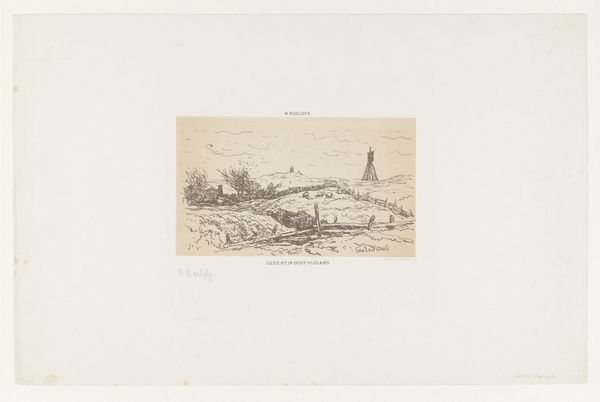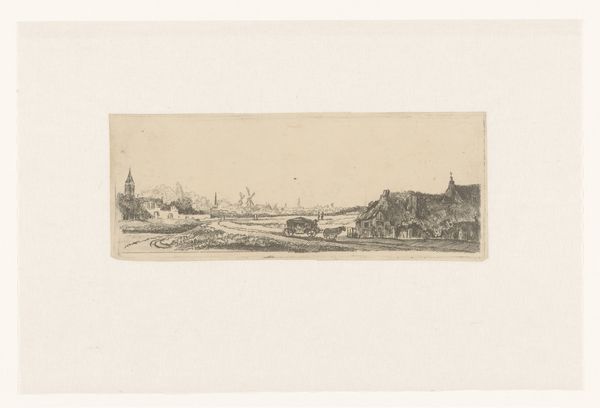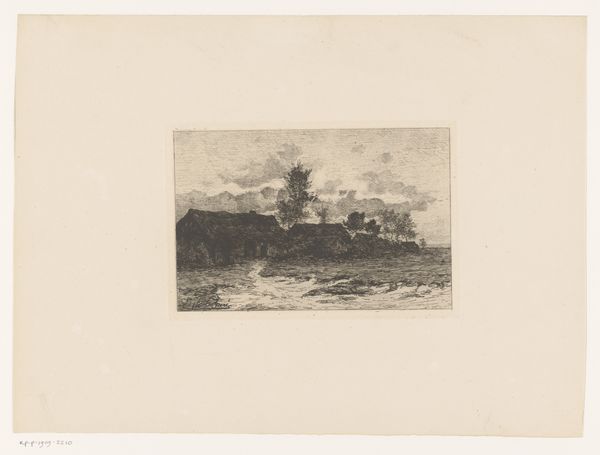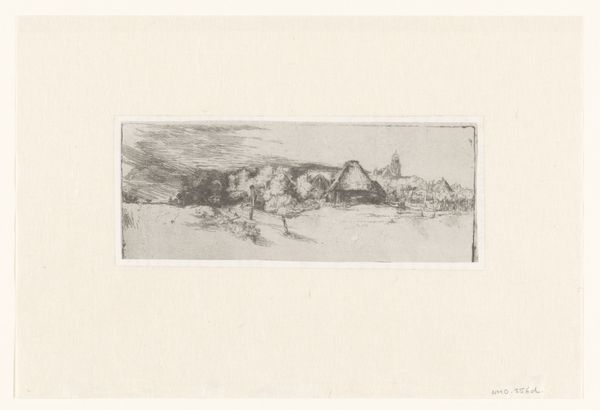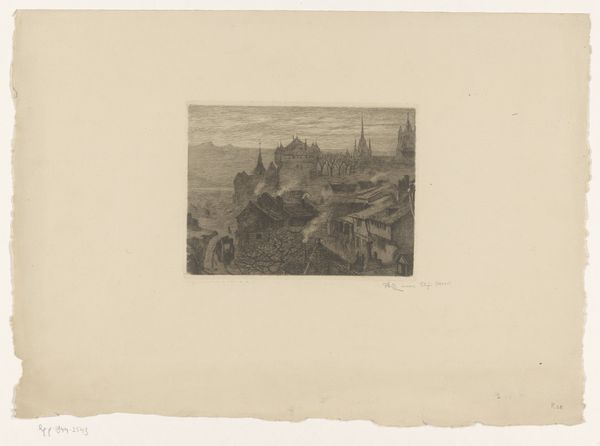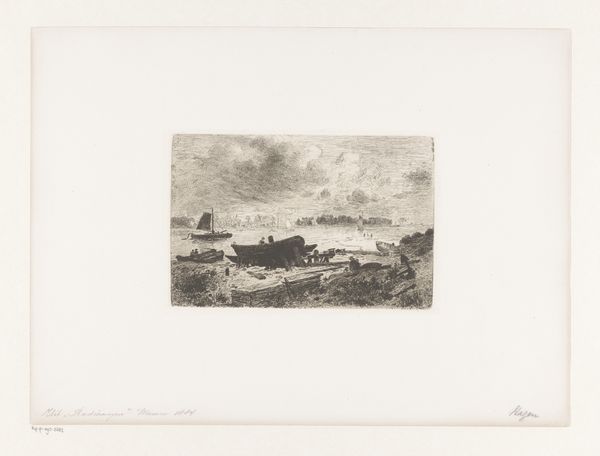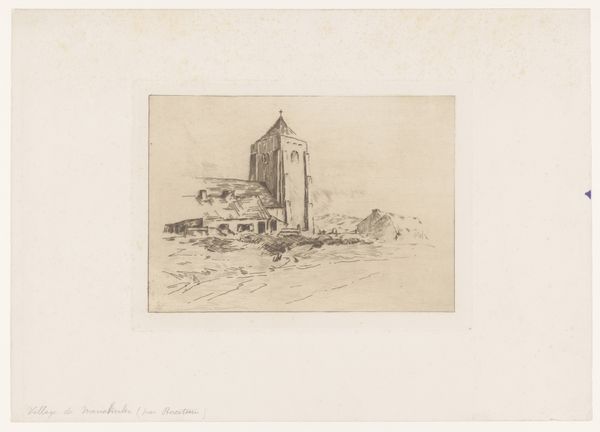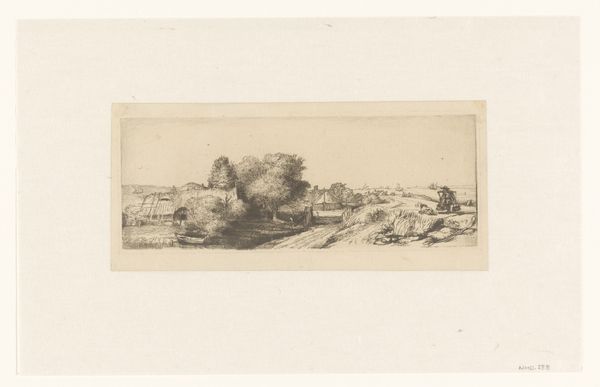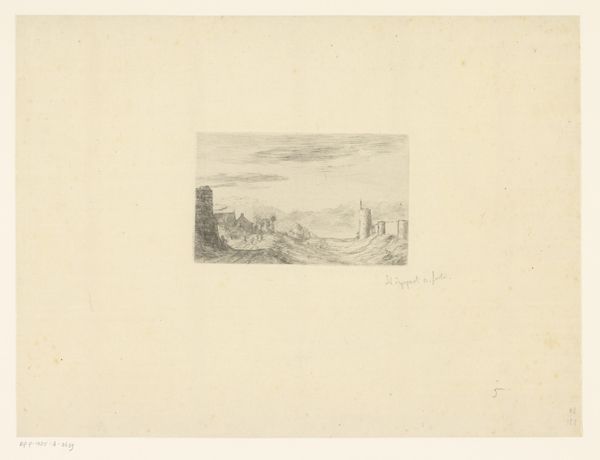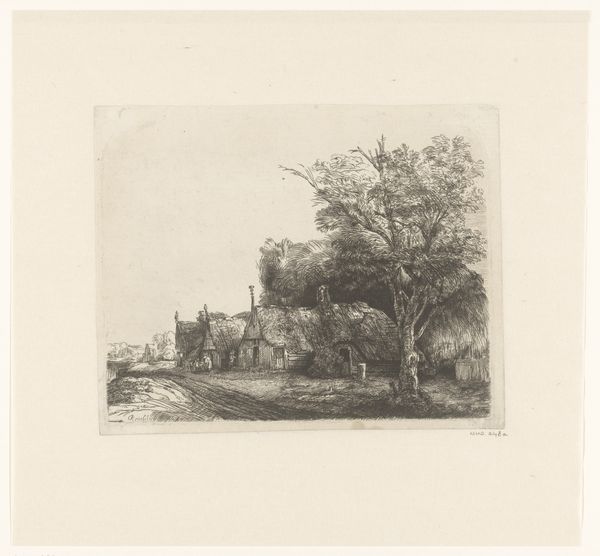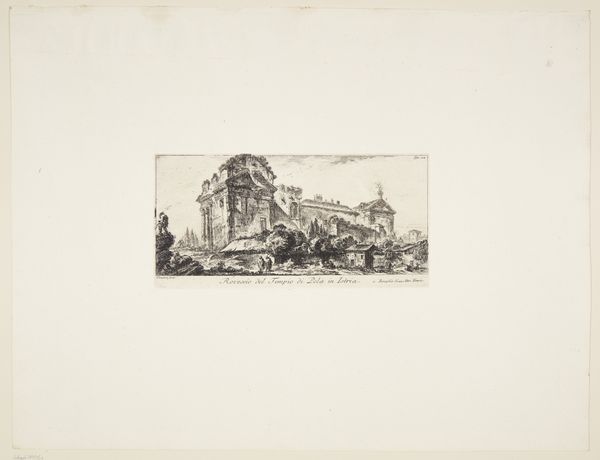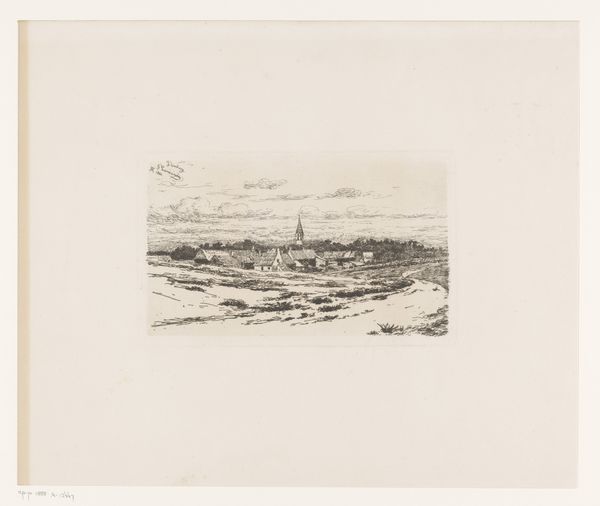
Cottage and boundary post on the Spaarndammerdijk ('L'Obelisque') 1750 - 1799
0:00
0:00
richardbyron
Rijksmuseum
drawing, paper, pencil
#
drawing
#
pencil sketch
#
landscape
#
paper
#
pencil
#
pencil work
#
northern-renaissance
#
realism
Dimensions: height 77 mm, width 159 mm
Copyright: Rijks Museum: Open Domain
This etching, 'Cottage and boundary post on the Spaarndammerdijk', by Richard Byron presents us with a seemingly simple landscape dominated by the boundary post - a tall, obelisk-like structure. This is not merely a marker of land, but a symbol laden with historical and cultural weight. The obelisk, a form that stretches back to ancient Egypt, was initially an emblem of sun worship and power, a petrified ray of sunlight. Across millennia, we find its echoes in various guises - from Roman monuments to modern-day memorials. This persistence speaks to a deep-seated human impulse: to mark territory, assert dominance, and commemorate. Consider how the boundary post, in its stark verticality, pierces the horizon, its form resonating with the ancient obelisks. The image stirs a collective memory, engaging viewers on a subconscious level. The boundary post evokes a primal sense of place and ownership that continues to evolve and resurface across historical contexts.
Comments
No comments
Be the first to comment and join the conversation on the ultimate creative platform.

